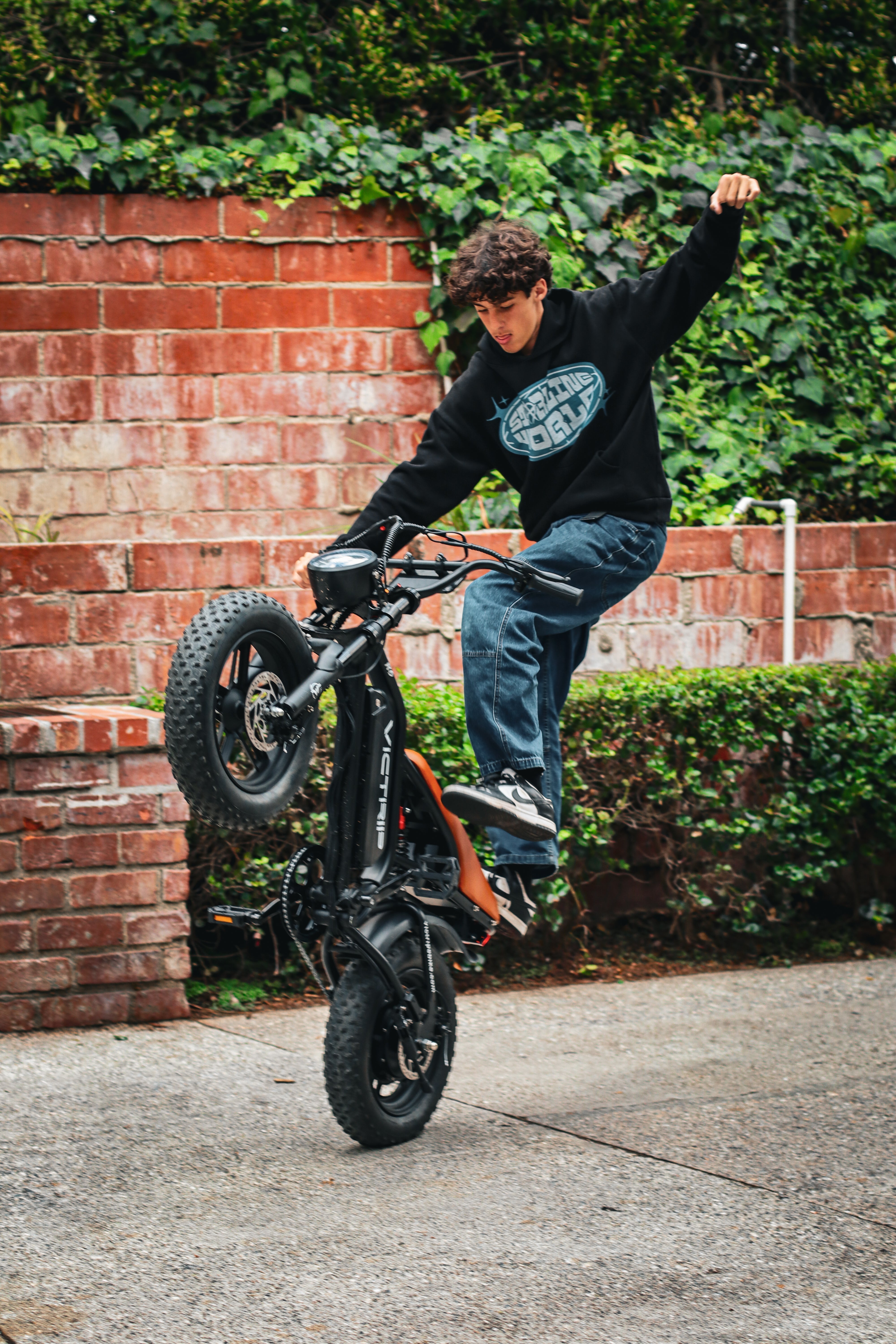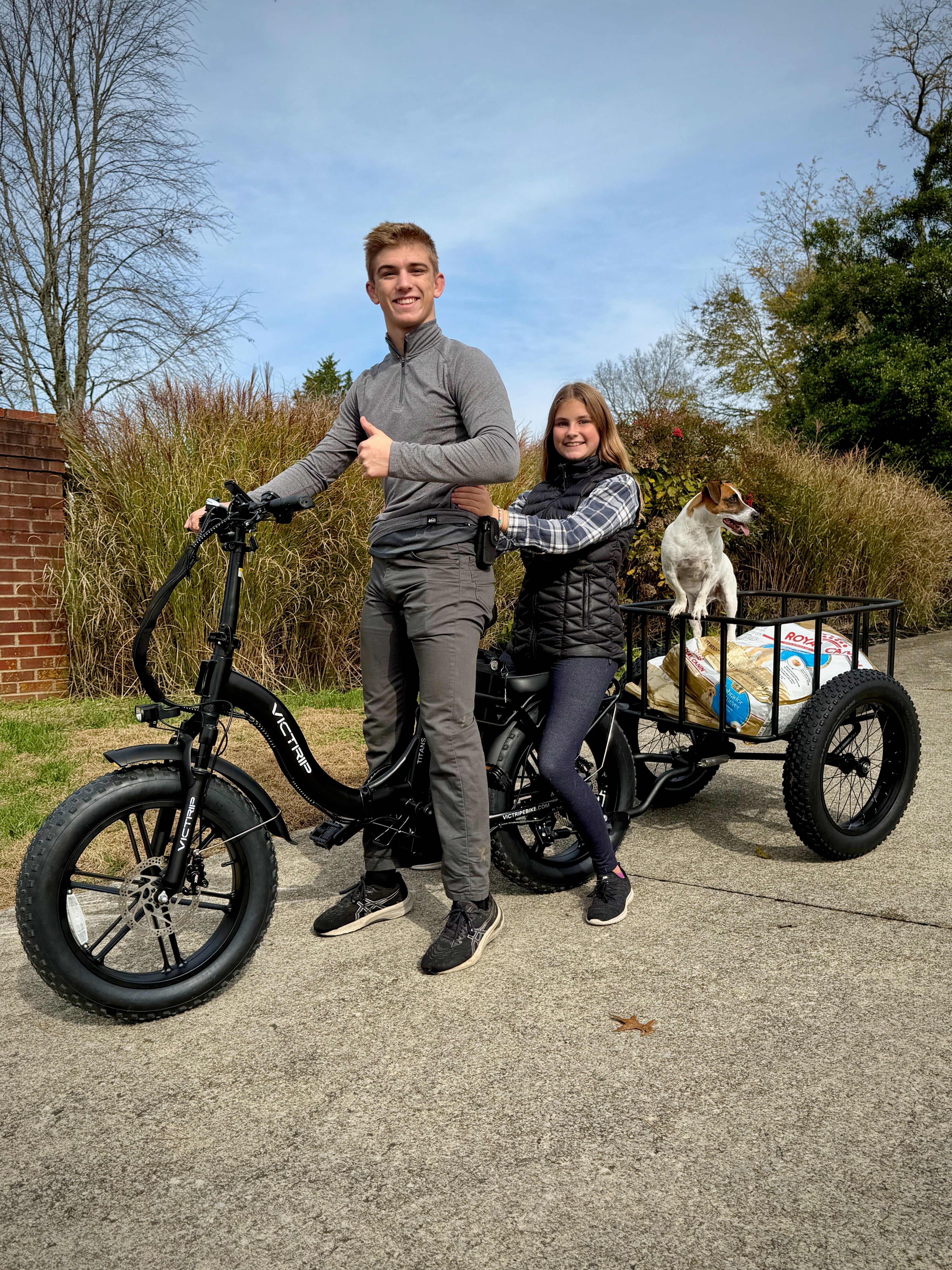
Electric bikes have exploded in popularity worldwide. Cities are seeing more commuters, cargo riders, and leisure cyclists choosing eBikes over cars for short trips. With that surge, a large second-hand market has grown — offering bargains and some risks. If you’re asking, “Are used eBikes worth the investment?”, the short answer is: sometimes yes, if you know what to check and how to price them.
This article walks you through the real pros and cons, safety notes you can’t ignore, realistic pricing expectations, and a thorough pre-purchase checklist so you can buy smart and ride safely.
What is a ‘used eBike’? Definitions and marketplace terms
A used eBike generally means any electric bicycle that’s been previously owned and ridden. Variants you’ll see on listings:
-
Used / Second-hand: Sold by an individual or business; may have wear but no formal refurb.
-
Refurbished: Inspected and repaired by a shop or certified refurbisher; often includes some warranty.
-
Nearly new / demo: Little mileage, often sold by dealers to move inventory.
Understanding these labels matters: a refurbished bike from a trusted shop usually carries less risk than an uninspected private sale. Always confirm what “used” specifically means in that listing — ask for receipts, odometer/mileage equivalents, and photos.
Why buyers consider used eBikes
There are three big reasons people buy used eBikes:
-
Price: You can often access a higher-quality frame, motor, or component set for much less than a new equivalent.
-
Access to discontinued or premium models: Popular mid- and high-end models often depreciate faster, letting buyers step up for less.
-
Sustainability: Buying used reduces waste and extends product life — a real plus if you care about carbon and resource use.
If you shop carefully, a used eBike can be the most cost-effective way to get reliable electric mobility.
Used Electric Bikes for Sale: Why Consider VICTRIP Used eBikes?
When exploring the market for used electric bikes, one name worth serious consideration is VICTRIP. Known for their durable frames, high-capacity LG batteries, and rider-focused engineering, VICTRIP used eBikes often provide some of the best value on the second-hand market.
Affordable pricing: With prices ranging from only $400–$800, these used models are far more budget-friendly compared to the $699–$1,200+ price tag of brand-new eBikes.
Eco-friendly choice: Choosing a VICTRIP used eBike means supporting green cycling and recycling. When we say “second-hand,” it doesn’t mean “worn out.” In fact, most of our bikes are:
-
Returned due to minor logistics damage during shipping (such as small scratches or packaging issues).
-
Customer returns for personal reasons (often unopened or only lightly used).
Reliable performance: All units are 90% new, fully functional, and include complete accessories. They deliver nearly the same reliability, mileage, and comfort as brand-new models, making them a smart and eco-conscious alternative.
If you’re browsing for used electric bikes for sale, putting VICTRIP on your shortlist could save you money while giving you access to a proven, reputable brand in the eBike world.

The Pros of buying a used eBike
Below are seven concrete benefits — three summarized here and four expanded below.
1. Lower initial cost
A used eBike typically sells at a discount to new retail — often 30–60% off depending on age, condition, and brand. That immediate savings can let you buy a much better-built machine than you could new at the same budget. This is the clearest financial upside.
2. Depreciation advantage
Most depreciation happens in the first 12–18 months. Buying a bike that has already taken that hit means slower percentage losses later; if you resell in 2–3 years you’ll usually lose less per year than the original buyer did. Average reported annual depreciation rates vary, but many sources show 15–25% per year, with the biggest drop in year one.
3. Access to premium features for less
Mid-drive motors, hydraulic brakes, high-quality suspension, and integrated racks that cost $3k–$5k new may be attainable second-hand for much less. You’re buying hardware that was expensive when new — and if it’s in good shape, it’s a bargain.
4. Faster ROI for light users
If you ride occasionally, the cost per mile for a used eBike can be far lower than buying new. Lower sunk cost plus decent remaining life equals quicker payback for casual riders.
The Cons of buying a used eBike
There are important and real downsides to be aware of.
5. Battery health and replacement cost (biggest single risk)
Batteries age and lose capacity. A worn battery means reduced range and an expensive replacement. Typical replacement battery costs are commonly reported between roughly $300 and $900 depending on brand, capacity, and compatibility — and premium OEM batteries (Bosch, Shimano, Yamaha) can be more costly. Factor replacement cost into your offer.
Practical tip: Ask the seller for current range, how they charge, whether the battery is removable, and whether any battery warranty still applies.
6. Safety: battery recalls and fire risks
Lithium-ion batteries power Ebikes but can pose fire risks if damaged, counterfeit, or used with incorrect chargers. Several recent recalls and news reports show that some cheap replacement batteries and non-certified bikes have caused house fires — a safety consideration you can’t ignore. Before buying, check for recalls on the model and confirm the battery is original and undamaged. If in doubt, buy from a certified refurbisher.
7. Warranty, service availability, and hidden damage
Used bikes often have expired warranties; some components (motors, displays) are proprietary and expensive to repair. Structural damage (cracked frames, bent forks) can be hidden or downplayed by sellers. A pre-purchase inspection at a reputable shop is almost always worth the fee.
Key factors to check before buying a used eBike — a step-by-step checklist
Always inspect in person, and if you can’t, get a professional inspection. Below is a practical checklist.
Battery checks
-
Visual condition: No bulges, cracks, or repaired seams.
-
Range test: Ask for a recent range or, better, test ride to see real-world range.
-
Charge cycles / age: Some batteries can report cycle count; if not, ask the seller for purchase date and usage.
-
Warranty: Is any original battery warranty transferable? Many OEM warranties are limited but still worth checking.
(Replacement battery price context: $300–$900 typical range; some OEM batteries are more expensive.)
Motor and drivetrain
-
Check for unusual noises under assist.
-
Inspect connectors and wiring for corrosion.
-
Shift through gears — check derailleur alignment or hub gear function.
Frame, forks, brakes, and wheels
-
Look for hairline cracks around welds and dropouts.
-
Check rim true and bearing play.
-
Test brakes for pedal feel and stopping power; hydraulic systems shouldn’t leak.
Paperwork and provenance
-
Request original receipt if available, service records, and the serial number. Use the serial number to check if the bike is reported stolen.
Electronics and display
-
Ensure display turns on and shows realistic range/mode. Test all assist modes and throttle if present.
How much should you pay for a used eBike? Pricing bands and depreciation
Pricing depends on brand, age, battery health, and condition. Typical expectations:
-
Under 1 year old: 60–80% of retail (if in excellent condition)
-
1–3 years old: 40–60% of retail (most buyers find value here)
-
3+ years old: 15–45% of retail — may need battery or component work.
Example: A $3,000 new eBike:
-
6 months — you might pay $1,800–$2,400
-
2 years — $1,200–$1,800
-
4 years — $450–$1,350 (depending on condition and battery)
When evaluating price, subtract an estimated battery replacement cost if the battery is showing noticeable degradation.
Where to buy used eBikes safely (platforms and dealers)
-
Local bike shops (LBS): Often sell trade-ins or refurbished models with service and some warranty — highest trust. Consumer Reports recommends test-riding and relying on dealers for service support.
-
Certified refurbishers / dealer-backed used programs: These often include inspection and limited warranty. For example, VICTRIP used eBikes.
-
Online marketplaces (e.g., eBay, Facebook Marketplace): Large selection and bargains but higher risk — insist on meeting, seeing documentation, and test-riding.
-
Trade-in/resale platforms (specialized eBike resale sites): Some platforms recondition bikes and provide buyer protection.
If safety matters (and it should), prioritize dealer-refurbished or shop-inspected bikes even if they cost a bit more.
Test ride and inspection checklist (practical)
Before you buy, do a test ride that includes:
-
Short flat ride: test acceleration, mid-assist, throttle.
-
Hills: check motor performance and battery drain.
-
Braking: emergency stop and normal braking.
-
Listen & feel: odd noises, harsh shifting, or motor hesitations.
-
Charging: confirm charger type, plug condition, and that the battery charges to full.
If you’re not confident doing this yourself, pay a local shop to inspect the bike — their expertise often uncovers hidden problems that save far more than the inspection fee.
Post-purchase: maintenance and immediate upgrades to consider
After buying a used eBike, prioritize:
-
Full service: brake bleed, drivetrain tune, wheel true, and safety check.
-
Battery health test: many shops can load-test and report remaining capacity.
-
Replace consumables: tires, brake pads, and chains are inexpensive upgrades that increase safety.
-
Register serial number: with manufacturer or local registry to deter theft.
Conclusion: Should you invest in a used eBike?
Used eBikes can absolutely be worth the investment — but success depends on three things: inspection, battery health, and where you buy. If you prioritize a dealer-refurbished machine or get a trusted shop to inspect a private sale, you’ll enjoy significant savings and a quick path to reliable electric mobility.
On the other hand, buying cheap, uncertified batteries or skipping a test ride increases risk — sometimes severely (battery fire risk and hidden structural damage are real concerns). Always factor in potential battery replacement costs and the availability of service for proprietary components.
FAQs
How long will a used eBike battery last?
Typical lithium-ion eBike batteries last 2–5 years depending on cell quality and usage. Real world life depends on cycles, storage, and charging habits. Expect some capacity loss and plan for replacement costs in the $300–$900 range.
Can I replace a non-removable battery?
Often yes, but cost rises if the battery is proprietary. Removal and replacement may require dealer service and can be expensive for OEM packs. Confirm compatibility and quotes before buying.
Are used eBikes safe to charge indoors?
Charging indoors is common but requires caution: use the correct charger, avoid damaged batteries, and never charge an unknown replacement battery unattended. Check for recalls and certifications (UL/CE) before buying.
Do I need to worry about software/firmware on a used eBike?
Yes. Some eBikes rely on manufacturer firmware for motor behavior and diagnostics. Ask whether the bike has current firmware and whether the dealer can update it. Updates can improve performance and safety.
What brands keep value best on the used market?
Generally higher-quality brands with good service networks retain more value. Resale varies by region and demand, but research shows many popular brands retain a larger share of original value. Expect brand and component differences to heavily influence resale.




Share:
How to Extend the Battery Life of Your Electric Tricycle?
How to Choose the Best Dual Battery eBike for Your Needs?